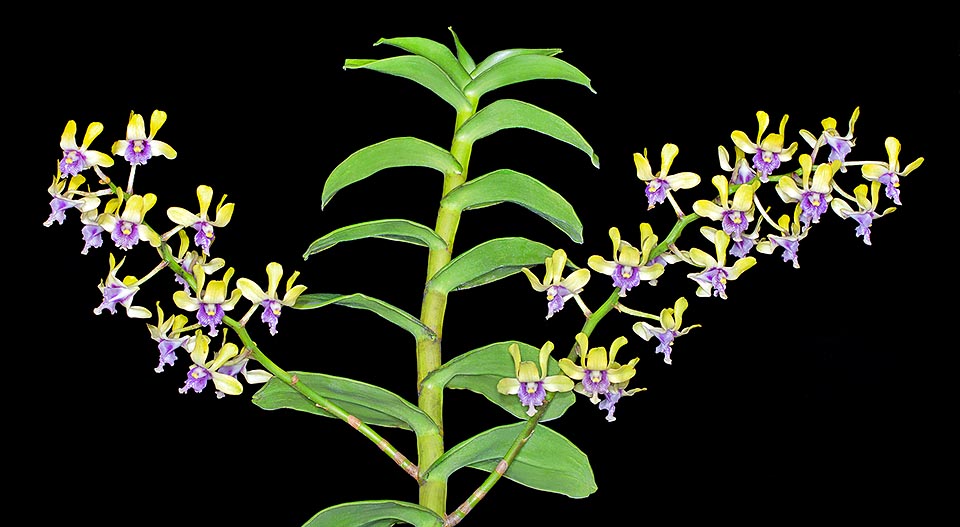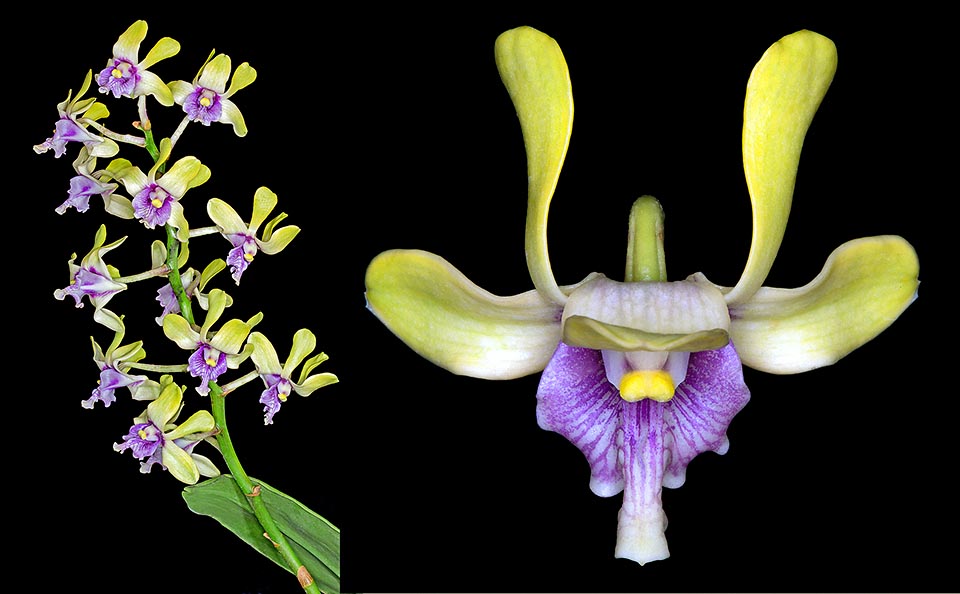Family : Orchidaceae

Text © Pietro Puccio

English translation by Mario Beltramini

Dendrobium violaceoflavens is an epiphyte or litophyte with pseudobulbs that reach even 5 m of height in the humid western New Guinea forests © Giuseppe Mazza
The name of the genus is the combination of the Greek substantives “δένδρον” (dendron) = tree and “βίος” (bios) = life, with reference to the numerous species of the genus living on the trees; the specific name is the combination of the Latin adjective “violaceus, a, um” = violaceous, violet, and of the present participle “flavens” = yellow, of the verb “flaveo” = to be yellow, with reference to the colour of the flowers.
The Dendrobium violaceoflavens J.J.Sm. (1929) is an epiphytic species with robust pseudobulbs that can reach in cultivation the length of 2 m, with specimens in nature up to 5 m, provided of alternate leaves, distichous, lanceolate to oblong-ovate, up to 20 cm long and 12 cm broad, coriaceous, of intense green colour. Racemose inflorescences from the upper nodes, 30-55 cm long, bearing numerous flowers, of 4,5-5,5 cm of diameter, waxy, with oblong sepals and spatulate pale yellow petals and white trilobed labellum with violaceous veins and shades; the flowers emit a pleasant and intense fragrance.
It reproduces by seed, in vitro, and division, to be done at the vegetative restart, with each section provided of at least 3-4 peudobulbs.

Rare species with showy inflorescences lasting even 2 months and waxy, scented flowers that can reach the 5,5 cm of diameter © Giuseppe Mazza
The species is reported in the appendix II of CITES (species whose trade is internationally ruled).
Synonyms: Durabaculum violaceoflavens (J.J.Sm.) M.A.Clem. & D.L.Jones (2002).
→ For general notions about ORCHIDACEAE please click here.
